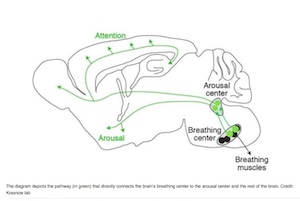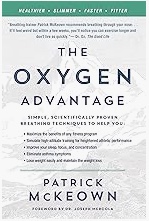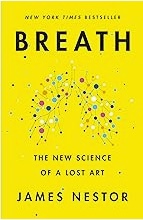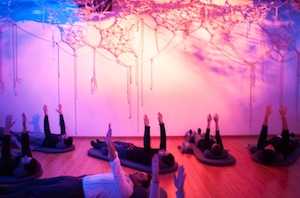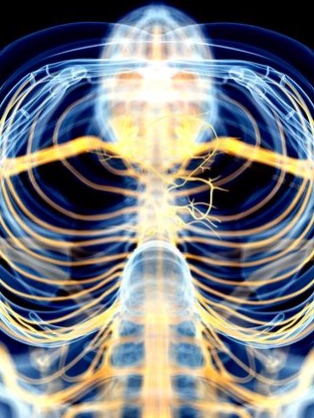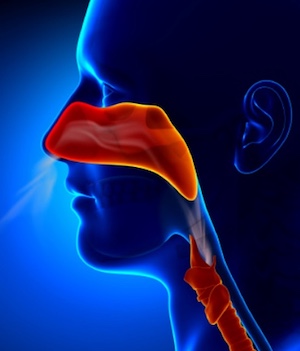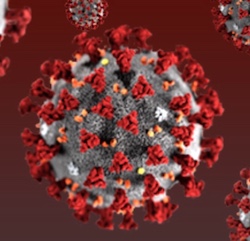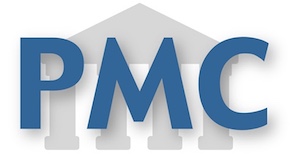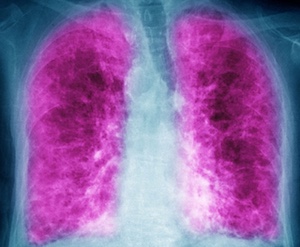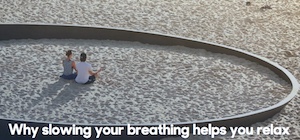Qigong Breathing
How to Harness the Power of Your Breath

Slow-Breathing Curriculum for Stress Reduction in High School Students: Lessons Learned From a Feasibility Pilot. PMCID: PMC9397716.
Veterans Administration. Live Whole Health #143: Breathing Practice.
Slow Breathing Is the Fastest Way To Calm Your Brain and Body
How Does Breathing Affect Your Brain? Neuroscientist are piecing together how the rhythm of respiration influences everything from cognition to emotion.
The Profound Power of Breathing. Deep, controlled breathing — an easy technique you can do anytime — can vastly improve your health and well-being.
The physiological effects of slow breathing in the healthy human. The aim of this article is to provide a comprehensive overview of normal respiratory physiology and the documented physiological effects of slow breathing techniques according to research in healthy humans. The review focuses on the physiological implications to the respiratory, cardiovascular, cardiorespiratory and autonomic nervous systems, with particular focus on diaphragm activity, ventilation efficiency, haemodynamics, heart rate variability, cardiorespiratory coupling, respiratory sinus arrhythmia and sympathovagal balance. [PMCID: PMC5709795]
Breathe through the nose! Modern research confirms the wisdom of the yoga tradition
Ageing of the Diaphragm Muscle. The article reviews the adaptations of the diaphragm muscle with respect to ageing, and it brings to light the importance of respiratory function to healthy ageing. Altered contractile function of the diaphragm can lead to accidental trauma, such as falls, and contributes to many diseases and conditions such as depression, fear of falling, anxiety, emotional alterations, memory issues, motor incoordination, and cognitive disorders. Ageing also affects posture, which in turn affects the diaphragm. This research makes clear how the practice of Qigong with it's emphasis on proper posture and exercising the diaphragm through purposeful, controlled diaphragmatic breathing contributes to health and active aging. PMCID: PMC7011578.
Respiratory Regulation & Interactions With Neuro-Cognitive Circuitry. Active control of breathing entrains respiration and brain activity which affects both mood and cognition. PMID: 32027875.
Understanding Mind-Body Disciplines: A Pilot Study of Breathing and Dynamic Muscle Contraction on Autonomic Nervous System Reactivity. Breathing combined with rhythmic muscle contraction led to greater activation of the parasympathetic response than either alternating contractions or breathing alone, which may help explain the stress reducing benefits of mind-body disciplines. PMID: 31347763.
National Qigong Association Research on Diaphragmatic Breathing.
Impact of diaphragm function parameters on balance maintenance. Deterioration of diaphragm function was closely related with deterioration of balance maintenance. Impairment of diaphragm function manifested by decrease of muscle thickness and movement restriction is strongly associated with balance disorders in a clinical sample and among healthy subjects. Diaphragmatic breathing is one way that Qigong and Tai Chi aid balance and mobility. PMCID: PMC6310257.
How breathing can help you make better decisions: Two studies on the effects of breathing patterns on heart rate variability and decision-making in business cases. Deep slow breathing (e.g. during the practice of Qigong) can increase vagal nerve activity, indexed by heart rate variability (HRV). These studies show that brief vagal breathing patterns reliably increase HRV and improve decision-making. PMID: 30826382.
The Influence of Breathing on the Central Nervous System. The functions of the diaphragm do not stop locally in its anatomy but affect the whole body system. The respiratory rhythm, directly and indirectly, affects the central nervous system (CNS). This article describes and reviews these influences, containing, for the first time, information on this subject in a single text. PMCID: PMC6070065.
The Effect of Diaphragmatic Breathing on Attention, Negative Affect and Stress in Healthy Adults. The present study illustrates the potential for diaphragmatic breathing practice to improve cognitive performance and reduce negative subjective and physiological consequences of stress in healthy adults. PMCID: PMC5455070.
The Yogi masters were right -- meditation and breathing exercises can sharpen your mind. New research explains link between breath-focused meditation and attention and brain health. The research shows for the first time that breathing - a key element of meditation and mindfulness practices - directly affects the levels of a natural chemical messenger in the brain called noradrenaline. This chemical messenger is released when we are challenged, curious, exercised, focused or emotionally aroused, and, if produced at the right levels, helps the brain grow new connections, like a brain fertiliser. The way we breathe, in other words, directly affects the chemistry of our brains in a way that can enhance our attention and improve our brain health. The full paper 'Coupling of respiration and attention via the locus coeruleus: Effects of meditation and pranayama' is available here: doi/10.1111/psyp.13091.
Breathing pattern disorders, motor control, and low back pain. There is evidence that the effects of breathing pattern disorders, such as hyperventilation, result in a variety of negative psychological, biochemical, neurological and biomechanical influences and interferences, capable of modifying each of these three subsystems. Diaphragmatic and transversus abdominis tone are key features in provision of core stability. Following just one minute of dysfunctional breathing, where carbon dioxide levels in the blood rise above normal, key core muscles either become weaker or stop working all together. This equals a recipe for chronic back pain.
Motivational Non-directive Resonance Breathing as a Treatment for Chronic Widespread Pain.This paper provides excellent background on the physiology and neurobiology of the combined effect of meditation, interoception, and intentful diaphragmatic breathing (in other words, Qigong) upon chronic pain. Based upon preliminary findings within the fields of motivational psychology, integrative neuroscience, diaphragmatic breathing, and vagal nerve stimulation, the authors propose a new treatment intervention for chronic widespread pain which includes key fundamentals of Qigong practice. PMCID: PMC6579813.




